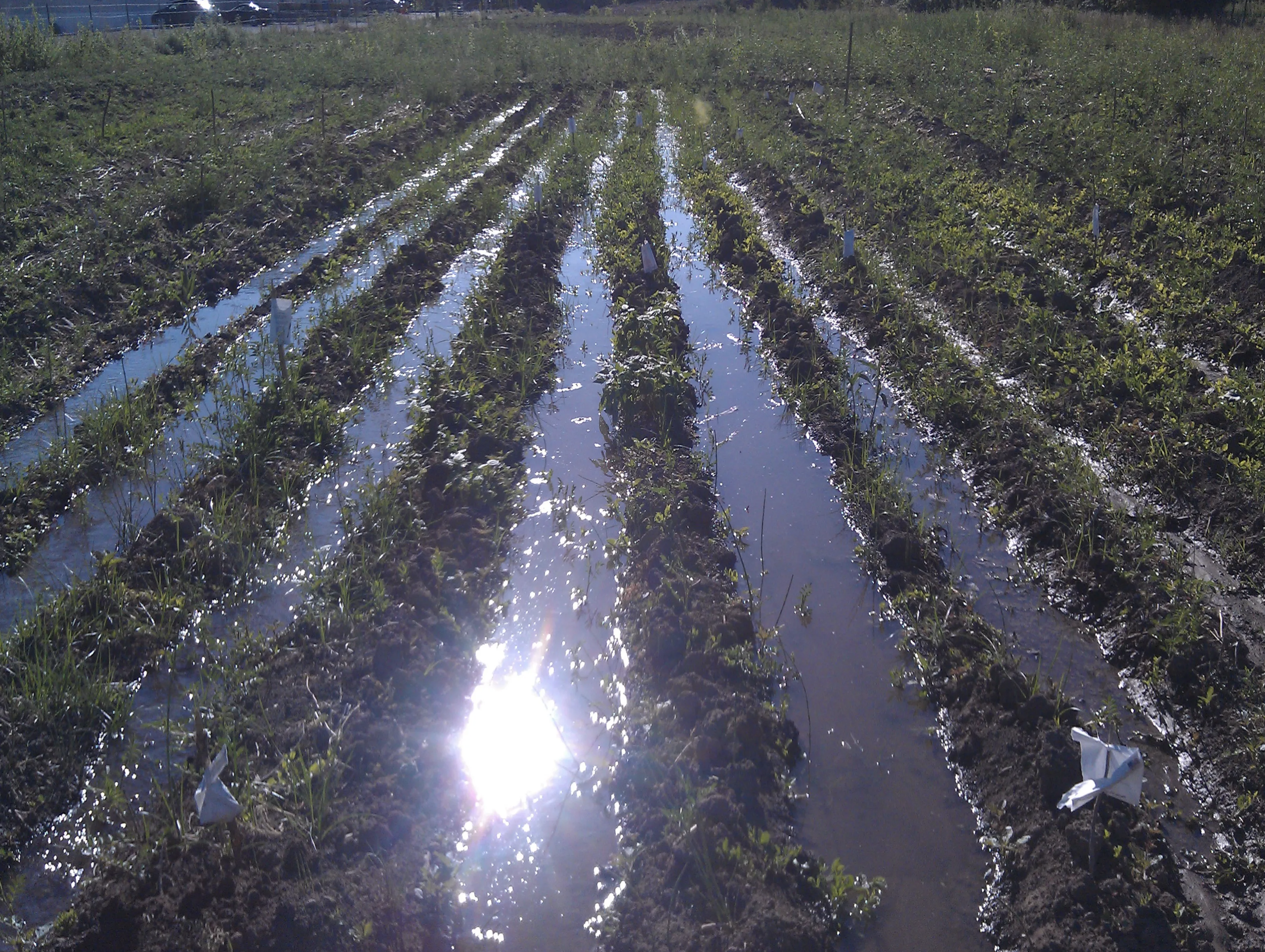
We believe in safe, clean water for communities today and for future generations.
Keeping Track of Toxins that Migrate from Los Alamos National Labs (LANL)
Communities for Clean Water monitors and informs the public about the presence of toxic discharges in the regional drinking water aquifer and surface waters such as rivers and acequias within the Rio Grande watershed. Toxins that we monitor include PCBs, chromium, heavy metals, radionuclides, and perchlorates. Through analyzing the New Mexico Environment Department (NMED) and LANL’s own data, as well as through independent scientific testing, we have documented that toxic waste from LANL dump sites quickly moves through surface water and groundwater and to other waterways, including the Rio Grande.We've detected toxins in community waters at levels that present a significant risk to human health. We monitor the levels of toxins exiting the canyons surrounding LANL, as we advocate for better environmental health and safety measures and cleanup at the Lab.
Legal Action and Public Policy to Protect Community Waters
In 2008, we successfully settled a Clean Water Act citizen lawsuit against the US Department of Energy for violations at Los Alamos National Laboratory (LANL). This victory resulted in the EPA mandating a stringent stormwater permit that requires LANL to clean up over 400 of their dirtiest dump sites. We continue to use legal action, supported by scientific evidence, in order to:
Enforce current pollution controls and hold LANL accountable to environmental and health and safety standards;
Pursue new regulatory avenues that will strengthen the protection of public health and that will spur the containment and cleanup of toxic discharges at LANL;
Strengthen EPA restrictions on toxic discharges at LANL;
Demand that the US Department of Energy and Congress budget and fund comprehensive cleanup at LANL. While some of the 2,100 dumps have been addressed, full cleanup of more than 1,260 dump sites remains under-funded and under-prioritized.
Encourage LANL to utilize their unique position to research, implement, and assess Low Impact Development (LID) and Green Infrastructure (GI) techniques – techniques that maintain and restore the natural hydrologic character of a development site, reduce off-site runoff, improve water quality, and provide groundwater recharge for controlling stormwater pollution in an arid climate.
Coalition Building and Public Awareness Creation
As a cooperative coalition, CCW amplifies the voices of the diverse, multicultural communities impacted by LANL. We aim to become the “vocal majority” and hold local, state, and federal regulators accountable to their responsibility to provide clean water and protect the health and well-being of communities. Many people living in the Rio Grande watershed don’t realize their water is being impacted by LANL toxic waste. We raise public awareness and open dialogues with diverse communities and organizations, in order to strengthen the grassroots movement for safe, clean water. Interested in joining the movement? Contact us!
Preparing Youth to Become Leaders of Change
We believe in safe, clean water for communities today and for future generations. A priority is preparing future leaders with the skills and resources to affect change. The CCW Youth Council is a self-governed youth organization that enables young people to become community leaders for clean water. We provide the Youth Council with mentorship and financial and technical support.Youth Council members engage their peers, as well as the larger community, in a dialogue about LANL-related water impacts. By participating in the Youth Council, young people strengthen their personal connection to water and grow empathy for all who depend on this life-giving resource. Through site visits, public presentations, the arts, and educational activities, they are building leadership skills and ecoliteracy--a sense of deep responsibility for the well-being of communities and the planet.
Major Victories
Successfully settled a Clean Water Act citizens’ lawsuit against the US Department of Energy for the toxic discharges occurring at LANL.
Ensured that the EPA issued one of the most stringent individual storm water permits in the country, which required LANL to halt the migration of toxins at 400 of the worst sites at the Lab within 5 years, with 63 of the “worst of the worst” sites required to be completed in 3 years.
Through a Clean Water Act citizens’ lawsuit, mandated that LANL engage the public in a dialogue, including a stormwater-specific website and biannual public meetings, about its current efforts to prevent toxins from migrating from legacy waste sites.
Our campaign to protect Santa Fe’s drinking water from toxic threats from LANL caused the board of the Buckman Direct Diversion (source of 40% of Santa Fe’s drinking water) to request that LANL take steps to prevent LANL-origin contaminants from entering the water supply. Read more about the Buckman Diversion’s request and LANL’s response and the Memorandum of Understanding here.
Other Victories
Created dialogue and information-sharing on LANL issues between all 19 New Mexico Pueblos, the Apache Tribes, and the Navajo Nation.
Secured funding for technical experts representing community interests to monitor LANL’s permit compliance and advocate for Low Impact Development/ Green Infrastructure (LID/GI) approaches for addressing storm water discharges.
Submitted a petition to EPA demanding they hold LANL accountable under a permit for ongoing storm water discharges of copper, zinc, mercury, and PCBs from urbanized sites at LANL and Los Alamos County.
Through cooperative technical meetings with LANL staff, successfully advocated for the implementation of Low Impact Development/ Green Infrastructure (LID/GI) projects at the Lab. Several of these projects have been already been constructed.
Successfully advocated for monitoring and reporting requirements for radionuclides in the Rio Grande.